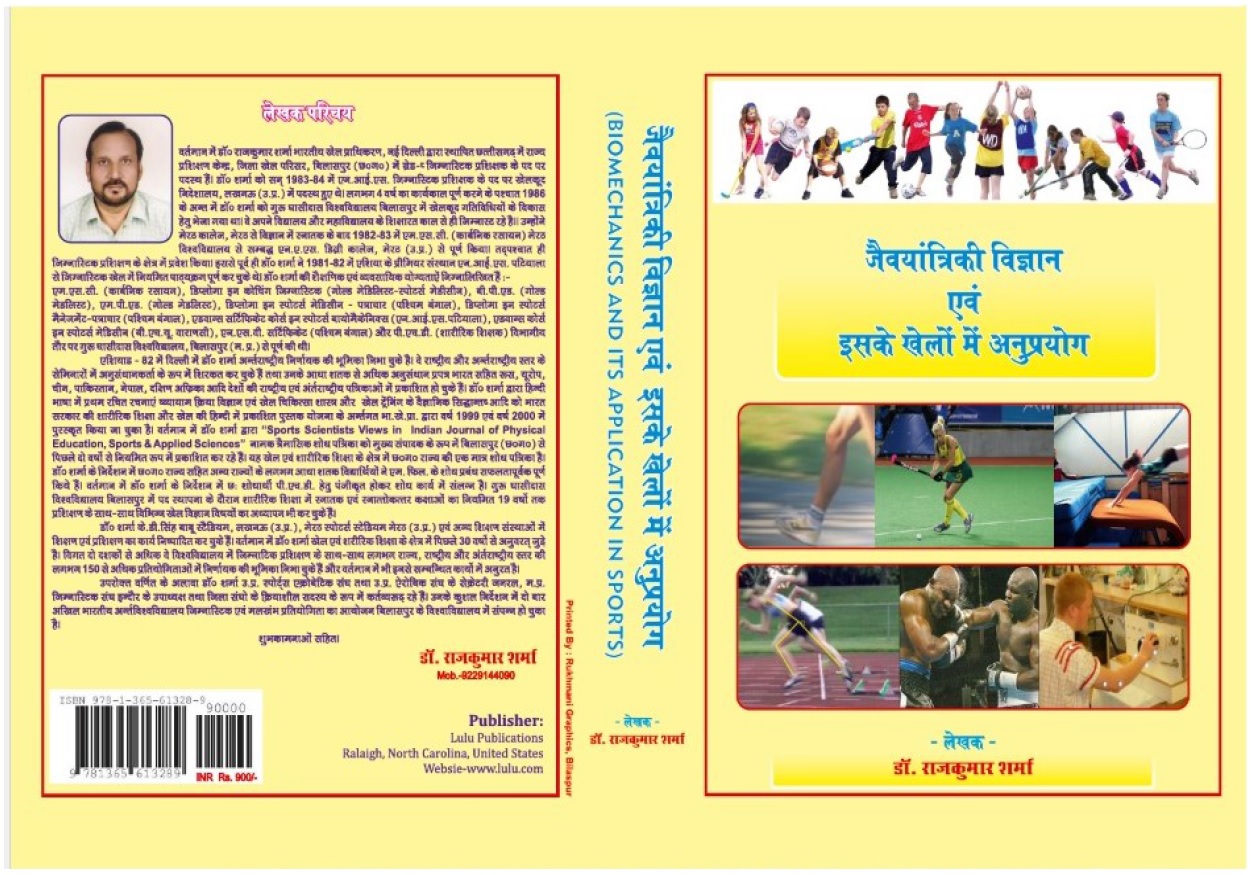| S.No. | Total View Count | Title of Manuscript | Page No | Download/ PDF |
|---|---|---|---|---|
| 1 | A COMPARATIVE STUDY OF ADJUSTMENT BETWEEN NORMAL AND DEAF STUDENTS Author: Mrs. Sudha Goyal1 | 61-69 |  12 12 |
Article info
doi no.: 05-2016-44975451,
DOI Link :: https://doi-ds.org/doilink/01.2022-89597288/IJPESAS/05.2016-44975451/V11/I4/A10
AFFILIATIONS:
- Assistant Professor, . D. P. Vipra College, of Education, Bilaspur (Chhattisgarh), Mobile-8770229546, E-mail-goyalsudha135@gmail.com
The problems of adjustment have become therefore very important in our complicated and civilized society that psychologists have turned their deep interest in understanding the concepts in the real sense. The present analysis was to compare the adjustment between male and female students belonging to higher secondary schools of Bilaspur district. A sample of Fifty (Males=25, Females= 25)) students' happiness to degree faculty of education of Bilaspur district and who volunteered to participate during this study, were designated to function subjects for this study. AICS by Sinha & Singh in Hindi was implemented to all the respondents. Questionnaire consisted of 102 questions to live 5 dimensions of adjustment viz., Home (l6), Health ( 15), Social (19), Emotional(31), and educational (21) and total adjustment. To find the difference between male and female students, mean, SD, and t-ratio were computed. The SPSS 16.0 computer program was used to investigate the collected data. The results of the study revealed that the significance difference was found between deaf boys and girls in four dimensions of adjustment i.e. Home, Health, Social, and emotional adjustment, Significance difference was not found between deaf boys and girls in four dimensions of adjustment i.e. Home, Health, Social, and emotional adjustment, The normal boys and Deaf boys; Normal girls and Deaf girls; Deaf boys and Normal girls; Normal boys and Deaf girls and deaf students and normal students had statistically significance of difference in three dimensions of adjustment i.e. Home, Health, and emotional dimensions of adjustment, as the obtained. The normal boys and Deaf boys; Normal girls and Deaf girls; Deaf boys and Normal girls; Normal boys and Deaf girls and deaf students and normal students did not differ significantly in social type of adjustment.
Keywords: Deaf, Normal, Students, Boys, Girls, Adjustment, Schools.
References
Polat, Filiz (2003). Factors Affecting Psychosocial Adjustment of Deaf Students. J Deaf Stud Deaf Educ, Summer, 8(3), 325-339.
Rekkedal, A.M. (2017). Factors associated with school participation among students with hearing loss. Scandinavian Journal of Disability Research, 19(3), 175–193.
Frustenberg K, Doyal G. (1994). The relationship between emotional-behavioral functioning and personal characteristics on performance outcomes of hearing-impaired students. American Annals of the Deaf, 139(4), 410-414.
Ushasree S. (1980). Social disadvantage, academic adjustment and scholastic achievement. Social Change, 1980;10, 20-30.
Srivastava S.N, Singh J, Thakur, G.P.(1980). Examination anxiety and academic achievement as a function of socio-economic status. Psychological Studies, 1980;25(2), 108-112.
Mishra M.A. (1986). A critical study of the influence of socio-economic status on academic achievement of higher secondary students in rural and urban areas of Kanpur.. PhD. thesis (Education), Kanpur University (in M. B. Buch's Fourth Survey of Researches in Education, 1(954).
Krishnamacharlu V.(1989). A study of the impact of socio-economic and occupational status of parents on scholastic achievement of their children at X class taken in Andhra Pradesh. PhD.Thesis, A.P. University, India.
Das R. (1994). Academic self-concept, stress and academic performance: A study of the SC, ST and general Arts and Science students. PhD. thesis, JNU, New Delhi-67.
Demorest M.E, Erdman S.A. (1989). Relationships among behavioural, environmental and affective communication variables: A colonial analysis of the CPHI. Journal of Speech and Hearing disorders, 54, 180-188.
Calderon R, Greenberg M.T.(1999). Stress and coping in hearing mothers of children with hearingloss: Factors affecting mother and child adjustment. American Annals of the Deaf, 144 (1), 7-18.
Kapoor S.(1990). Cognitive functioning and perspective taking ability: A comparative analysis of normal and deaf. PhD thesis, JNU, New Delhi, India.
Powers S.(1999). The educational attainments of deaf students in mainstream programs in England: Examination results and influencing factors. American Annals of the Deaf, 144(3), 261-269.
Prior M.R, Glazner J, Sanson A, Debelle G.(1988). Temperament and behavioural adjustment in hearingimpaired children. Journal of Child Psychology and Psychiatry, 29(2), 209-216.1988
Vostanis P, Heys M, DuFeu M.(1997). Behavioral and emotional problems in hearing-impaired children: A preliminary study of teacher and parent ratings. European Journal of Special Needs Education, 12(3), 239-246.
Arnold P, Atkins J.(1991). The social and emotional adjustment of hearing-impaired children integrated in primary schools. Educational Research, 33 (3), 223-227.
Erdman S.A, Demorest M.E.(1998). Adjustment to hearing-impairment ?: Audiological and demographic correlates. Journal of Speech, Language and Hearing Research, 41 (1), 123-136.
Jyothi A, Reddy I.V.R.(1996). A comparative study of adjustment and self-concept of hearing-impaired and normal children. Journal of Psychological Researches, 40(1), 6-10.
Daulay, D. A. and Rahmawati, A. (2016). Social Adjustment of Adolescents with Hearing Impairment. pp. 296-303 Advances in Social Science, Education and Humanities Research, 1st International Conference on Social and Political Development, 2016.
Nadir, S., Akhtar S. and Ali M. (2006). Need satisfaction and social adjustment of deaf and dumb children in faisalabad. J. Anim. Pl. Sci., 16(3-4), 104
Satapathy, Sujata (2008). Psychosocial and demographic correlates of academic performance of hearing-impaired adolescents Asia Pacific Disability Rehabilitation Journal, 19 (2) , 63-75
Heryati, E. (2010). Psychological needs profile of Adolescent with hearing Impairmant. Bandung: PLB UPI.
Schneiders, A. (1964). Personal adjustment and mental health. New York: Rinehart & Winston.
Somantri, S. (2007). Psychology of child disabilities. Bandung: PT Refika
Jameel , H. T., Nabeel, T., and Batool, H. (2019). A comparative study of social adjustment among special needs children. Research Journal of Education Awkum, 3 (2), 21-31
Spence, S. H. (2003). Social skills training with children and young people: Theory, evidence and practice. Child and adolescent mental health, 8(2), 84-96.
 admin@sportscientistsviews.com
admin@sportscientistsviews.com





